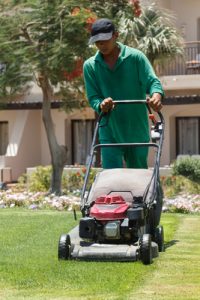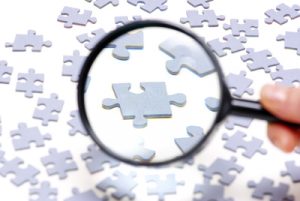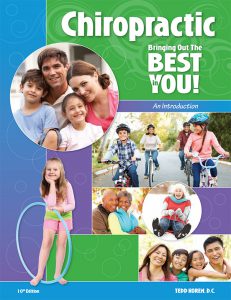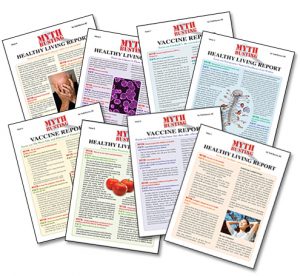Allergy relief can be easily and quickly obtained using a recently-discovered physiological phenomenon.
Allergy relief question
Who gets subluxated lying face down (or face up) on a table?
Allergy relief answer
Pretty much no one!
Real-life scenarios
 In real life, most people get subluxated when they are active: playing sports, involved in accidents, running, jumping, carrying children (as a trampoline for a toddler), working in various positions, experiencing emotional trauma or otherwise living life. Why then do we insist on only checking patients for subluxations as they are lying on a table? It’s often very limiting.
In real life, most people get subluxated when they are active: playing sports, involved in accidents, running, jumping, carrying children (as a trampoline for a toddler), working in various positions, experiencing emotional trauma or otherwise living life. Why then do we insist on only checking patients for subluxations as they are lying on a table? It’s often very limiting.
Why limiting? It’s a little-known but important phenomenon that when people assume different postures—physical (static or moving), emotional and physiological—they reveal subluxations (blockages, interferences, stresses, dysfunctions, stagnation) that may not be revealed when they are in a neutral position such as lying on a table or not thinking of anything special. Why is that?
Sneaky subluxations
It’s because subluxations are sneaky things. Subluxations are physically, emotionally and physiologically posture-specific. In other words, they reveal themselves when people are in certain physical or emotional postures or states. Unless that is taken into consideration in patient analysis, most healthcare professionals, especially chiropractors, bodyworkers, physical therapists, allergy specialists, trauma therapists, psychologists (and others) are not finding some of the most significant subluxations in their patients.
Clinical experience tells us that some subluxations may only reveal themselves when a person is placed in the posture in which they were physically and emotionally traumatized. Often physical and emotional trauma cannot be separated.
Therefore, we recommend that the practitioner place the patient in the posture of pain, limitation, discomfort (including allergies), or motion as they recapitulate an accident or injury, how they sit all day at work, how they bend, twist or move as they are in pain—and so many other postures.
What is a subluxation?

Before care
We are using the term subluxation as a metaphor for any stress that interferes with the natural flow of energy or information within a person.
A subluxation may be in the spinal column (a vertebral subluxation such as are addressed by chiropractors). A subluxation may be in the cranium (as addressed by those who practice craniopathy, CranioSacral Therapy or Sacro-Occipital Technique [SOT]). It could be in the mouth as a result of root canals, cavitations and other oral infections (as addressed by holistic or biological dentists). Or a subluxation could be in our mental/emotional reality [as addressed by Neuro-Emotional Technique (NET), Eye-Motion Desensitization Response (EMDR), Emotional Freedom Technique (EFT), Meridian Tapping Technique (MTT) and other such mind-body procedures].

After care
Emotional as well as physical
Please keep in mind that as a person changes their thoughts their physical body may undergo hundreds of chemical and structural changes. Subluxations may also reveal themselves as a person remembers or re-lives a memory of a traumatic experience. Correcting the subluxations that surface when a person is in the subluxation-producing state often serves as a “pattern interrupt.” You are in a sense, breaking a neurological reflex or a “tape loop.” Put another way, you are rebooting the system and restoring neural integrity—thus freeing energy for healing.
Physiological POS—allergy relief
Subluxations can also be described as physiological as well as physical or emotional. A physiological subluxation reveals itself when a person is exposed to stresses that affect the physiology. An example of a physiological subluxation is when a person smells, tastes or touches (or even thinks about) an allergen and has an allergic reaction.
How can we address the POS?
Don’t despair, KST (Koren Specific Technique) to the rescue! One of the unique approaches of KST is the use of the POS—posture of subluxation (or posture of stress) in patient care, to locate subluxations/stresses that most healthcare practitioners miss—and to correct them.
As mentioned earlier, who gets hurt laying face up or face down on a table? Why do we assume that is the best posture or position to reveal and release damage? In many cases, it is not.
Allergy relief: grass subluxation
Here is a great way to show the value of putting people in a physiological posture of subluxation. Let’s say a person is allergic to fresh-cut grass. You go out to your front lawn and take some grass. Then you test your patient as he or she looks at it, holds it, smells it, even tastes it. Then you correct whatever subluxations arise when they are in that POS. When a subluxation associated with an allergy is corrected, the allergy often loses its hold on the person. The allergy may even completely disappear.
Allergy relief: real-life examples
Here are some allergy stories culled from the KST archives:
Grass allergies
I just recently graduated from my first KST seminar. My first patient Monday morning was experiencing chronic bad grass allergies so I decided to use KST. I went out and got some grass from my office yard and put it in a baggy. I then had the patient hold the bag and smell the grass.
Several cranial problems showed up which I corrected. Four days later she came back saying that she had no allergy symptoms since the last visit and she even mowed her yard. Needless to say, I was impressed but the patient was even more impressed! I am anticipating that this will be my first in a long list of KST “miracles.”
James Schmit, DC, Celina, Ohio
I had a 16-year-old boy come in with a severe grass allergy…I went outside and grabbed a handful of grass and had him hold it to his nose and take in a deep breath as I corrected what came up.
Two months later his parents came into the office and told me that their son is mad. “Why?” I asked. They explained that it’s because he can no longer use his allergy as an excuse to get out of mowing the yard.
Kris Laubach, DC, Muncy, Pennsylvania
Cat allergy
 This weekend my brother and his family were visiting. My nephew has a severe cat allergy. They were going to have to leave early because my nephew was reacting to my daughter’s cat. He was stuffed up and had swollen red eyes.
This weekend my brother and his family were visiting. My nephew has a severe cat allergy. They were going to have to leave early because my nephew was reacting to my daughter’s cat. He was stuffed up and had swollen red eyes.
I had him hold a blanket that the cat sleeps on, to put it just under his nose. I corrected the subluxations that appeared. He cleared up immediately and was fine for rest of the weekend.
William (Sandy) Watt, DC, Calgary, Alberta, Canada
Environmental allergies
A 21-year-old male with severe allergies, difficulty in breathing and headaches came in for care. Within three weeks of KST all his symptoms were resolved. KST is the most exciting thing I’ve done in my 36 years of practice.
Ernest Laubach, DC, Muncy, Pennsylvania
Just try it
For the millions of people suffering from physiological subluxations (i.e. allergies) this approach—locating and correcting the subluxations as they are exposed to their allergens—is a surprisingly simple, and very effective way to release allergies from their physiology, from their neuro-immune system and to free up energy for healing.
Allergy relief: this is how you do it
 Just put your patient in the allergy posture of subluxation (POS) by exposing them to the allergen. It could be grass, a certain food, a fabric, a perfume—have them bring it in. If it’s a cat allergy you can have them bring in a cat (or more easily have them think of it, they don’t have to actually hold a cat), or whatever triggers their allergy symptoms! Often the allergy is purely physical, sometimes it’s purely emotional and sometimes it’s a combination.
Just put your patient in the allergy posture of subluxation (POS) by exposing them to the allergen. It could be grass, a certain food, a fabric, a perfume—have them bring it in. If it’s a cat allergy you can have them bring in a cat (or more easily have them think of it, they don’t have to actually hold a cat), or whatever triggers their allergy symptoms! Often the allergy is purely physical, sometimes it’s purely emotional and sometimes it’s a combination.
Why do we call it practicing?
Please try this out and let me know what you find. Remember, you are a detective and sometimes locating the sneaky, hidden subluxations takes a bit of “detective work.”
What works perfectly for 10 patients may not work on the 11th. Why? Everyone is unique in many different ways—that’s why doctors are said to “practice” their art. They are still learning. I have found that I learn from every patient. We learn the most from the most difficult patients. That often makes for great frustration. And that often leads to exciting discoveries.
KST searches for the secret subluxations—physical, emotional, physiological—and releases them in the order the body wishes them released. KST’s success with allergies is just one of its many applications.
Tedd Koren, DC discovered Koren Specific Technique, a breakthrough in healthcare, after dozens of doctors were unable to help him. For more information on KST or to register for an upcoming seminar, go to www.korenspecifictechnique.com or call 267-498-0071 (US East Coast).
Please scroll down below to leave me a comment.
And please share this far and wide – patients, colleagues, friends & family!
The buttons are on the right.=====>

Dr. Tedd Koren
Dr. Koren, originally from Brooklyn, NY, lives in Montgomery County, PA. A graduate of the U of Miami and Sherman College of Chiropractic, he writes, lectures and teaches in the US, Europe and Australia as well as takes care of patients and fights for healthcare freedom. Dr. Koren and his wife Beth have two children.










